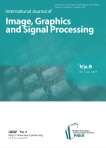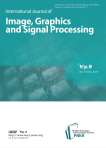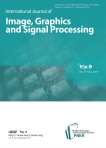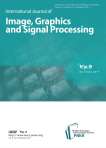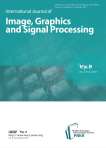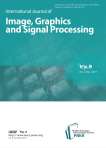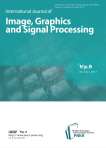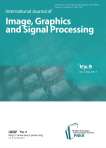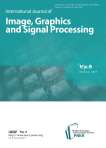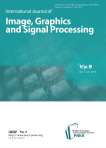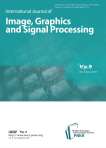International Journal of Image, Graphics and Signal Processing @ijigsp
Статьи журнала - International Journal of Image, Graphics and Signal Processing
Все статьи: 1157
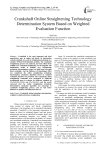
Статья научная
Crankshaft is the most important and hard manufacture part in engine and diesel, its deformation contains multiple arcs, and its straightening technology is a complex NP-hard determination problem. The crankshaft straightening process was analyzed, and some effects from multiple arcs crankshaft straightening was investigated. The mathematics model of multiple arcs straightening technology determination system was built based on graph theory principle. And the Influence of Bauschinger effect was considered, the online straightening technology determination calculation algorithm based on weighted evaluation function was proposed. The experiments about straightening crankshaft were performed in YH40-160 straightening press to evaluate two different weighted set C1={2.5,1.5,1,1.2,3.5} and C2={1,1,1,1,1}, and the results expressed that the online straightening technology determination calculation algorithm was advantage to crankshaft straightening process, and C1 had better influence to qualities and efficiencies than C2.
Бесплатно

Crop Type Classification Based on Clonal Selection Algorithm for High Resolution Satellite Image
Статья научная
This paper presents a hierarchical clustering algorithm for crop type classification problem using multi-spectral satellite image. In unsupervised techniques, the automatic generation of clusters and its centers is not exploited to their full potential. Hence, a hierarchical clustering algorithm is proposed which uses splitting and merging techniques. Initially, the splitting method is used to search for the best possible number of clusters and its centers using non-parametric technique i.e., clonal selection method. Using these clusters, a merging method is used to group the data points based on a parametric method (K-means algorithm). The performance of the proposed hierarchical clustering algorithm is compared with two unsupervised algorithms (K-means and Self-Organizing Map) that are available in the literature. A performance comparison of the proposed algorithm with the conventional algorithms is presented. From the results obtained, we conclude that the proposed hierarchical clustering algorithm is more accurate.
Бесплатно
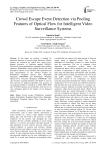
Статья научная
In this paper we propose a method for automatic detection of crowd escape behaviour. Motion features are extracted by optical flow using Lucas-Kanade derivative of Gaussian method (LKDoG) followed by robust probabilistic weighted feature pooling operation. Probabilistic feature polling chooses the most descriptive features in the sub-block and summarizes the joint representation of the selected features by Probabilistic Weighted Optical Flow Magnitude Histogram (PWOFMH) and Probabilistic Weighted Optical Flow Direction Histogram (PWOFDH). One class Extreme Learning Machine (OC-ELM) is used to train and test our proposed algorithm. The accuracy of our proposed method is evaluated on UMN, PETS 2009 and AVANUE datasets and correlations with the best in class techniques approves the upsides of our proposed method.
Бесплатно
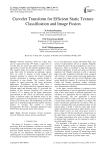
Curvelet transform for efficient static texture classification and image fusion
Статья научная
Wavelet Transform (WT) has widely been used in signal processing. WT breaks a signal into its wavelets that are scaled and shifted versions of given signal. Thus wavelets are able represent graphical objects. The irregular shape and compact support of wavelets made them ideal for analyzing non-stationary signals. They are useful in analysis in both temporal and frequency domains. In contract, the Fourier transform provides information in frequency domain lacking in information in time domain. Thus wavelets became popular for signal processing and image processing applications. Nevertheless, wavelets suffer from a drawback as they cannot effectively represent images at different angles and different scales. To overcome this problem, of late, Curvelet Transform (CT) came into existence. CT is nothing but the higher dimensional generalization of WT which can effectively represent images at different angles and different scales. In this paper we proposed a CT method that is used to represent textures and classify them. The methodology used in this paper has an underlying approach that exploits statistical features of curvelets that resulted in curvelet decomposition. We built a prototype application using MATLAB to demonstrate proof of the concept.
Бесплатно
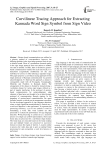
Curvilinear Tracing Approach for Extracting Kannada Word Sign Symbol from Sign Video
Статья научная
Gesture based communications are utilized as a primary method of correspondence, however, the differing qualities in the sign image portrayal limit its use to district bound. There is a tremendous assorted quality in the sign image portrayal from one nation to another, one state to another. In India, there is distinctive gesture-based communication watched for each state locale. It is henceforth exceptionally troublesome for one area individual to convey to other utilizing a signature image. This paper proposes a curvilinear tracing approach for the shape portrayal of Kannada communication via gestures acknowledgment. To build up this approach, a dataset is consequently made with all Swaragalu, Vyanjanagalu, Materials and Numbers in Kannada dialect. The arrangement of the dataset is framed by characterizing a vocabulary dataset for various sign images utilized as a part of regular interfacing. In the portrayal of gesture-based communication for acknowledgment, edge elements of hand areas are thought to be an ideal element portrayal of communication through signing. In the preparing of gesture-based communication, the agent includes assumes a critical part in arrangement execution. For the developed approach of sign language detection, where a single significant transformation is carried out, a word level detection is then performed. To represent the processing efficiency, a set of cue symbols is used for formulating a word. This word symbols are then processed to evaluate the performance for sign language detection. Word processing is carried out as a recursive process of a single cue symbol representation, where each frame data are processed for a curvilinear shape feature. The frame data are extracted based on the frame reading rate and multiple frames are processed in successive format to extract the region of interest. A system outline to process the video data and to give an optimal frame processing for sign recognition a word level process is performed.
Бесплатно
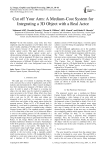
Cut off Your Arm: A Medium-Cost System for Integrating a 3D Object with a Real Actor
Статья научная
In the film industry, many tricks have been employed using the integration of a 3D object with a real actor. Usually, attaching a 3D object with a real actor is a costly process because of the usage of an expensive motion capture system. This paper presents a system using a medium-cost motion capture system and a chroma-keying technique for generating a video footage of an actor with an integrated 3D object (e.g. amputated arm). The result of the proposed system shows the attaching process of different 3D objects with a real actor who is combined with a new background scene in the same viewpoint.
Бесплатно
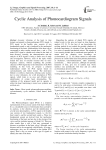
Cyclic Analysis of Phonocardiogram Signals
Статья научная
Acoustic vibrations of the heart in time domain correspond to phonocardiogram (PCG) signal. A PCG signal, in the healthy case, consists of two fundamental sounds s1 and s2 produced by the mechanical functioning of the heart. Abnormalities in the heart valves correspond to other cardiac sounds than s1 and s2. This makes PCG signal a valuable tool related to the track of heart diseases. Actually, the characterization and the analysis of PCG signals is being a fertile area of study and investigation. However, most of the topics which treated this area of research focused only on time-frequency analysis, without exploiting the periodic character of PCG signal due to the limitations of the PCG modeling. In this work, we propose a coherent mathematical model for PCG signals based on cyclostationarity and Gabor kernel. The motivation behind is to define a framework, utilizing cyclic statistic due to noise robustness, for a full description of PCG signals, which leads to an easy and efficient early identification of certain heart abnormalities. The validation of the proposed model and its capacity to reflect the heart functioning is tested over synthetic and real data sets.
Бесплатно
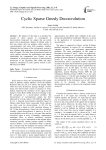
Cyclic Sparse Greedy Deconvolution
Статья научная
The purpose of this study is to introduce the concept of cyclic sparsity or cyclosparsity in deconvolution framework for signals that are jointly sparse and cyclostationary. Indeed, all related works in this area exploit only one property, either sparsity or cyclostationarity and never both properties together. Although, the key feature of the cyclosparsity concept is that it gathers both properties to better characterize this kind of signals. We show that deconvolution based on cyclic sparsity increases the performances and reduces significantly the computation cost. Finally, we use simulations to investigate the behavior in deconvolution framework of the algorithms MP, OMP and theirs respective extensions to cyclic sparsity context, Cyclo-MP and Cyclo-OMP.
Бесплатно

